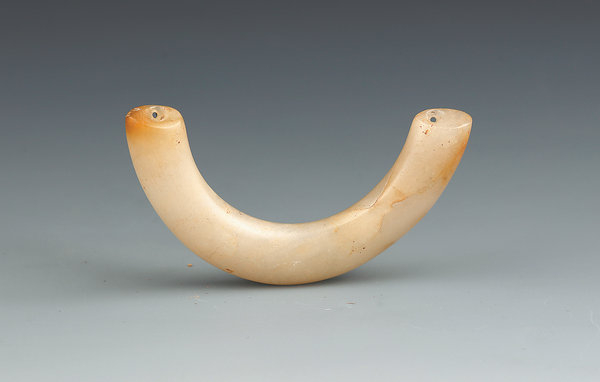

Some pits, on the other hand, are paved with mat and clamshell.
Researchers have also discovered house foundations at the site, most of which are made of reeds and wood. The number four foundation, for instance, remains 11 meters long from east to west and 7.7 meters wide.
It was constructed using wood and reeds as raw materials, with the main structure located on the northern side. A wooden fence is located on the outermost southwestern and southern sides, forming a semicircular enclosure. A reed fence or wall is located inside the wooden fence, with a remaining length of 5 meters and a width of over 1 meter, says Gan.
Reed architecture was common in the early stage of the site, but in the later period, wooden structures seemed to have developed to a higher level, he adds.
Among various artifacts unearthed, Gan says the bone relics are especially well-made and rich in number and type.
"We have found more than 1,600 bone artifacts like spade-shaped farm tools, boot-like artifacts, arrowheads, hair clasps, daggers, awls and needles. They are exquisitely crafted and entirely polished. In addition to the finished products, some blanks and semifinished pieces were also unearthed," says Gan.
The plant and animal relics help people gain an understanding of ancient people's subsistence. Researchers have identified remains or seeds of water chestnuts, rice, Gorgon fruit and wild soybean.
"The rice remains unearthed at the site are identified as cultivated rice. ... Therefore, the early settlers' food acquisition included at least agricultural production and gathering of wild edible plants, with rice farming being an important component of their livelihood," says Gan.